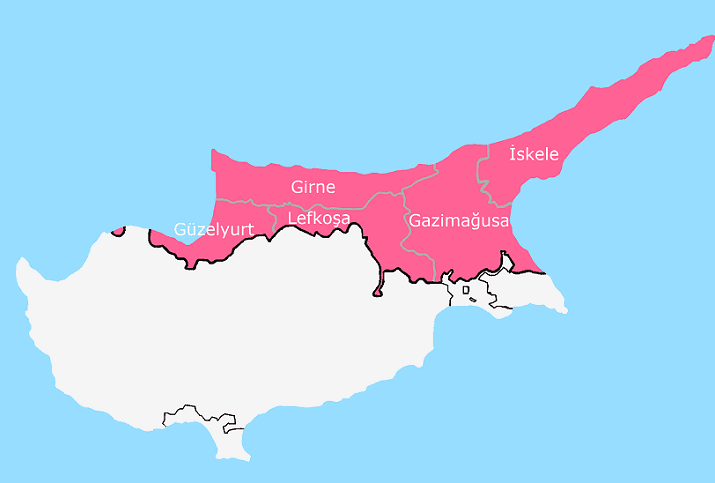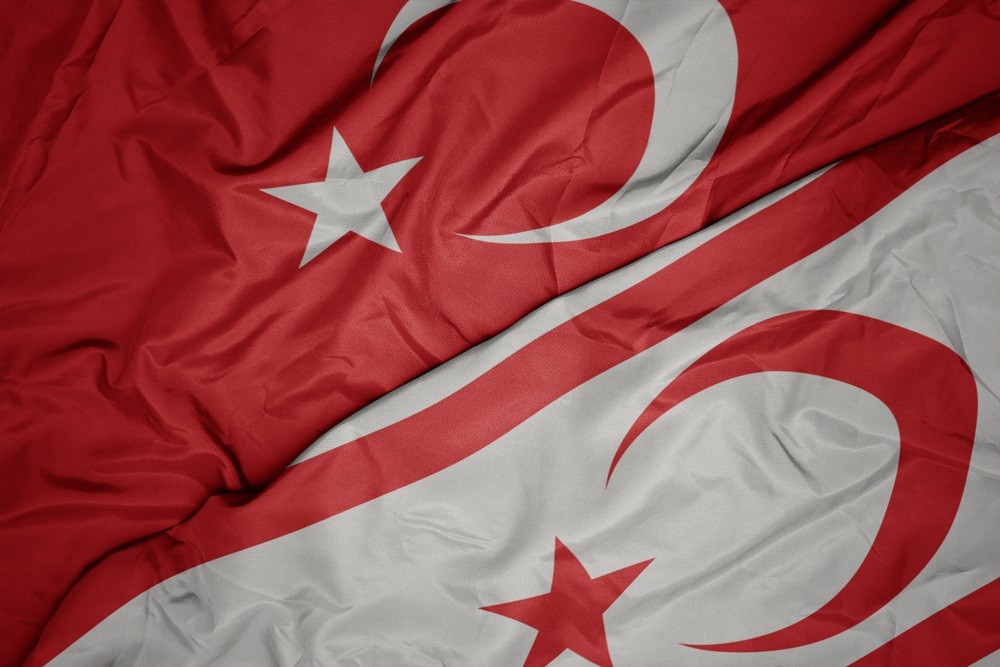
Discovery of the Area of the TRNC
Discovery of the Area of the TRNC
Discovery of the Area of the TRNC
The Turkish Republic of Northern Cyprus (TRNC) is a special region located in the heart of the Mediterranean. This island, which draws attention with both its natural beauties and cultural riches, has a unique charm. However, how much do we know about the surface area of the TRNC? This surprisingly large area is not just a region measured in numbers; it is also a point where life, history, and the future converge.
In this article, we will address the curiosities regarding the area of the TRNC. Understanding the width of the TRNC can offer new perspectives for those living there and those visiting. Therefore, this article will be an indispensable guide for both those living in the TRNC and those wanting to get to know the island better.
What is the Surface Area of the TRNC?
The surface area of the Turkish Republic of Northern Cyprus is known to be approximately 3,355 square kilometers. This figure shows how significant the TRNC is compared to other islands in the Mediterranean. With this vast area, the TRNC hosts many natural beauties and cultural heritage.
This area includes various geographical features and rich ecosystems. The TRNC, which hosts different geographical structures such as mountains, coasts, and plains, stands out with its biodiversity. This makes the island not only an attractive tourist destination but also an important center for environmental research.
Geographical Structure of the Island
A large portion of the TRNC's surface area consists of mountainous regions. The Five Finger Mountains are located in the north of the island, and this mountain range offers magnificent views. At the same time, these mountains have become a center of attraction for nature lovers with their hiking trails and natural habitats.
The coastal regions are surrounded by the deep blue waters of the Mediterranean. With its long beaches and crystal-clear sea, the TRNC is a center of attraction for tourists, offering different beauties in every season. Especially during the summer months, a holiday filled with water sports and beach activities can be experienced.
Agricultural Areas and Agricultural Products
The vast agricultural areas included in the TRNC's surface area are of great importance for the island's economy. These lands, where various fruits and vegetables are grown, primarily citrus fruits, also contribute to the island's local cuisine. Agriculture supports local employment and plays an important role in Northern Cyprus's foreign trade.
Regions with intensive agricultural production are also suitable for rural tourism. Visitors can experience nature closely in these areas. In this context, agriculture and tourism are two main sectors working together to efficiently utilize the island's surface area.
The Turkish Republic of Northern Cyprus (TRNC) is a special region located in the heart of the Mediterranean. This island, which draws attention with both its natural beauties and cultural riches, has a unique charm. However, how much do we know about the surface area of the TRNC? This surprisingly large area is not just a region measured in numbers; it is also a point where life, history, and the future converge.
In this article, we will address the curiosities regarding the area of the TRNC. Understanding the width of the TRNC can offer new perspectives for those living there and those visiting. Therefore, this article will be an indispensable guide for both those living in the TRNC and those wanting to get to know the island better.
What is the Surface Area of the TRNC?
The surface area of the Turkish Republic of Northern Cyprus is known to be approximately 3,355 square kilometers. This figure shows how significant the TRNC is compared to other islands in the Mediterranean. With this vast area, the TRNC hosts many natural beauties and cultural heritage.
This area includes various geographical features and rich ecosystems. The TRNC, which hosts different geographical structures such as mountains, coasts, and plains, stands out with its biodiversity. This makes the island not only an attractive tourist destination but also an important center for environmental research.
Geographical Structure of the Island
A large portion of the TRNC's surface area consists of mountainous regions. The Five Finger Mountains are located in the north of the island, and this mountain range offers magnificent views. At the same time, these mountains have become a center of attraction for nature lovers with their hiking trails and natural habitats.
The coastal regions are surrounded by the deep blue waters of the Mediterranean. With its long beaches and crystal-clear sea, the TRNC is a center of attraction for tourists, offering different beauties in every season. Especially during the summer months, a holiday filled with water sports and beach activities can be experienced.
Agricultural Areas and Agricultural Products
The vast agricultural areas included in the TRNC's surface area are of great importance for the island's economy. These lands, where various fruits and vegetables are grown, primarily citrus fruits, also contribute to the island's local cuisine. Agriculture supports local employment and plays an important role in Northern Cyprus's foreign trade.
Regions with intensive agricultural production are also suitable for rural tourism. Visitors can experience nature closely in these areas. In this context, agriculture and tourism are two main sectors working together to efficiently utilize the island's surface area.



Urban Development of the TRNC
Northern Cyprus has made significant strides in urban development in recent years. Cities such as Nicosia, Kyrenia, and Famagusta have become centers of attraction for both locals and foreigners. These cities have managed to maintain their historical texture while meeting the requirements of modern living.
Urban development is supported by infrastructure projects and new housing areas. This situation contributes to the island's economy while simultaneously improving the quality of life. Therefore, urban areas in the TRNC have strategic importance for the island's future.
Historical and Cultural Heritage
Northern Cyprus is a region rich not only in natural beauty but also in historical and cultural heritage. Many artifacts and structures dating from ancient times to the present are scattered across the island. This heritage provides important clues for understanding the island's identity and history.
Historical settlements and ruins shed light on Northern Cyprus's past. These areas are unique places to explore for both researchers and history enthusiasts. The historical riches also enhance the island's tourism potential.
Festivals and Cultural Events
Northern Cyprus also attracts attention with various festivals and cultural events held throughout the year. These events bring the local community together while offering unforgettable experiences for tourists. Cultural events are making a difference on the island and strengthening social cohesion.
Festivals are enriched with elements such as local arts and crafts, music, and dance. These events showcase the cultural diversity and creativity of the island. Participants get the opportunity to experience the warm and hospitable atmosphere of Northern Cyprus through these events.
The Educational and Research Potential of Northern Cyprus
The TRNC is also an important center in the field of education and research. Hosting many universities and research institutions enhances the island's academic potential. These institutions are attractive centers not only for local students and researchers but also internationally.
Educational institutions operate with many campuses spread across Northern Cyprus. These campuses provide students with quality education through advanced infrastructures and modern educational facilities. The educational and research potential will also be an important driving force for the island's future development.
Urban Development of the TRNC
Northern Cyprus has made significant strides in urban development in recent years. Cities such as Nicosia, Kyrenia, and Famagusta have become centers of attraction for both locals and foreigners. These cities have managed to maintain their historical texture while meeting the requirements of modern living.
Urban development is supported by infrastructure projects and new housing areas. This situation contributes to the island's economy while simultaneously improving the quality of life. Therefore, urban areas in the TRNC have strategic importance for the island's future.
Historical and Cultural Heritage
Northern Cyprus is a region rich not only in natural beauty but also in historical and cultural heritage. Many artifacts and structures dating from ancient times to the present are scattered across the island. This heritage provides important clues for understanding the island's identity and history.
Historical settlements and ruins shed light on Northern Cyprus's past. These areas are unique places to explore for both researchers and history enthusiasts. The historical riches also enhance the island's tourism potential.
Festivals and Cultural Events
Northern Cyprus also attracts attention with various festivals and cultural events held throughout the year. These events bring the local community together while offering unforgettable experiences for tourists. Cultural events are making a difference on the island and strengthening social cohesion.
Festivals are enriched with elements such as local arts and crafts, music, and dance. These events showcase the cultural diversity and creativity of the island. Participants get the opportunity to experience the warm and hospitable atmosphere of Northern Cyprus through these events.
The Educational and Research Potential of Northern Cyprus
The TRNC is also an important center in the field of education and research. Hosting many universities and research institutions enhances the island's academic potential. These institutions are attractive centers not only for local students and researchers but also internationally.
Educational institutions operate with many campuses spread across Northern Cyprus. These campuses provide students with quality education through advanced infrastructures and modern educational facilities. The educational and research potential will also be an important driving force for the island's future development.



Share on social media



The Mysterious Extent of Northern Cyprus: Discover the Area of TRNC
The approximate area of the TRNC is 3,355 square kilometers, combining the island's natural beauty, cultural heritage, and economic potential. In this article, explore the opportunities offered by the TRNC's wide area, from its geographical structure to urban development, agriculture to tourism.
12/25/24 - 11:41 AM



The Ties Between the TRNC and Turkey
The historical, cultural, and economic ties between the TRNC and Turkey enable the two peoples to establish a strong brotherhood relationship. In this article, explore the similarities and collaborations in language, education, tourism, politics, and many other fields.


We are Building
Your Dreams.
Contact us
Contact us



We are Building
Your Dreams.
We are Building
Your Dreams.
Contact us
Contact us
Contact us